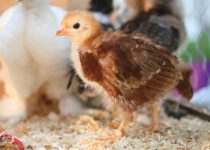Identifying Backyard Bird Species: A Comprehensive Guide
Are you curious about the various bird species that visit your backyard? Look no further! This comprehensive guide will help you identify the feathered visitors with ease.
Learn how to recognize bird field marks, decipher their calls and songs, and even understand their behavior and feeding preferences.
With tips on differentiating between similar species and keeping a birding journal, you’ll soon become an expert backyard birdwatcher.
Get ready to embark on an exciting avian adventure!
Table of Contents
Understanding Bird Field Marks
To identify different backyard bird species, you need to familiarize yourself with their unique field marks. These distinguishing characteristics are like fingerprints for birds, helping you differentiate one species from another. Field marks include features like color patterns, size, shape, beak structure, and wing shape. By paying attention to these details, you can become an expert at identifying birds.
Color patterns are one of the most obvious field marks. Notice the colors on the bird’s head, back, wings, and belly. Look for any distinct patterns or combinations of colors. For example, a bright red patch on the bird’s chest may indicate a male cardinal. Similarly, a black mask on the face could mean you’re looking at a chickadee.
Size and shape are also important field marks. Compare the bird’s size to familiar objects like a sparrow or a robin. Is it small and slender or large and robust? Take note of the bird’s overall shape, whether it has a long tail or a short beak.
Using Bird Calls and Songs
Wondering how to further enhance your backyard bird identification skills? One of the most effective ways to identify bird species is by using bird calls and songs. Birds use their calls and songs to communicate with each other, establish territory, and attract mates. By familiarizing yourself with the unique vocalizations of different bird species, you can easily identify them even if you can’t see them.
To start, it’s important to listen to the sounds of birds in your area. Pay attention to the different types of calls and songs you hear and try to associate them with specific bird species. You can use online resources or birding apps that provide audio recordings of bird calls to help you in the identification process.
When listening to bird calls, focus on the overall pattern and rhythm, as well as the pitch and tone. Some birds have simple and repetitive calls, while others have complex melodies. By identifying these patterns, you can narrow down the possibilities and identify the bird species more accurately.
Additionally, it’s helpful to learn the specific calls and songs of common backyard birds. This knowledge will enable you to identify them quickly and easily. For example, the melodious song of a robin or the distinctive call of a blue jay are recognizable sounds that can help you identify these birds without even seeing them.
Identifying Birds by Behavior
Now let’s take a closer look at identifying birds by their behavior.
Pay attention to their vocalizations and communication, as different species have distinct calls and songs.
Observe their feeding habits and foraging techniques, as these can vary greatly among bird species.
Lastly, take note of their nesting and breeding behaviors, as these can provide important clues for identification.
Vocalizations and Communication
When identifying backyard bird species, listen for the distinct vocalizations and communication patterns of the birds. These unique sounds can help you identify different species and understand their behavior. Here are three key aspects to consider when it comes to vocalizations and communication:
-
Song: Birds use a variety of songs to communicate, including territorial songs, mating calls, and warning calls. Each species has its own unique song, which can be a helpful clue in identifying them.
-
Calls: Birds also use calls to communicate different messages. These can include alarm calls, contact calls, and begging calls. Pay attention to the specific pitch, rhythm, and frequency of the calls to narrow down the possibilities.
-
Body language: Birds often use body language to communicate, such as wing displays, tail flicking, and head bobbing. Observing these behaviors can give you valuable insights into their species and intentions.
Feeding Habits and Foraging
To identify backyard bird species by their feeding habits and foraging behavior, pay attention to the specific techniques and patterns displayed by the birds in your own backyard. Birds have unique ways of obtaining food, and by observing their behavior, you can gain insight into their species. Here is a table outlining common feeding habits and foraging techniques among backyard bird species:
| Feeding Habit | Foraging Technique | Example Bird Species |
|---|---|---|
| Insectivorous | Flycatching | Eastern Phoebe |
| Granivorous | Ground foraging | Dark-eyed Junco |
| Frugivorous | Tree hopping | Cedar Waxwing |
| Nectarivorous | Proboscis feeding | Ruby-throated Hummingbird |
| Omnivorous | Scavenging | American Crow |
Nesting and Breeding Behaviors
To identify backyard bird species based on their behavior, observe their nesting and breeding behaviors. By paying attention to how birds build their nests and raise their young, you can gain valuable insights into their species. Here are three key behaviors to look out for:
-
Nesting Location: Different bird species have specific preferences when it comes to choosing a nesting location. Some birds prefer to build their nests in trees, while others may opt for shrubs or even on the ground. Pay attention to where the birds are nesting to help identify their species.
-
Nest Design: The design of a bird’s nest can also provide clues about its species. Some birds build intricate, cup-shaped nests, while others create messy, loose structures. Take note of the nest’s shape, size, and materials used to narrow down the potential bird species.
-
Breeding Behavior: During breeding season, birds often display unique behaviors such as courtship displays, territorial disputes, and mating rituals. Observe these behaviors to help identify the species and understand their breeding habits.
Recognizing Bird Feeding Preferences
Understanding the dietary preferences of different bird species is crucial for attracting them to your backyard. By providing the right types of food, you can create a welcoming environment that encourages birds to visit and stay. It’s important to note that not all birds have the same feeding habits, so it’s essential to offer a variety of food options.
Different bird species have specific preferences when it comes to their diet. Some birds, such as finches and sparrows, primarily feed on seeds, while others, like hummingbirds, prefer nectar from flowers. Insects and worms are a favorite food for birds like robins and bluebirds. To attract these insect-eating species, you can create a suitable habitat by incorporating plants that attract insects into your backyard.
In addition to knowing what types of food to offer, it’s also important to consider how to present the food. Some birds prefer to feed from hanging feeders, while others are ground feeders and prefer food placed on a tray or platform. By understanding the feeding preferences of different bird species, you can provide the appropriate feeders and feeding stations to cater to their needs.
Remember to keep your bird feeders clean and well-maintained to prevent the spread of diseases among the birds. Regularly replenish the food and clean the feeders to ensure a healthy feeding environment. By taking these steps, you can create an inviting space that attracts a wide variety of bird species to your backyard.
Differentiating Between Similar Species
Now let’s talk about how to differentiate between similar bird species in your backyard.
One way to do this is by paying attention to visual identification tips, such as the size, shape, and coloration of the birds.
Additionally, vocalization can also be a distinguishing factor, as different bird species have unique calls and songs.
Visual Identification Tips
When trying to differentiate between similar bird species in your backyard, it’s important to pay attention to specific visual characteristics. Here are three visual identification tips to help you distinguish between similar species:
-
Observe the size: Pay attention to the overall size of the bird, including its body and wingspan. Some species may have subtle differences in size that can help you tell them apart.
-
Look for distinctive markings: Take note of any unique patterns or markings on the bird’s feathers, such as stripes, spots, or patches of color. These markings can be key identifiers for different species.
-
Focus on beak shape: The shape and size of a bird’s beak can vary significantly between species. Note the beak’s length, curvature, and thickness, as these characteristics can provide clues about the bird’s diet and help narrow down its identification.
Vocalization as Distinguishing Factor
To accurately differentiate between similar bird species in your backyard, pay attention to their vocalizations, as they serve as a distinguishing factor. While visual cues can be helpful, birds often share similar physical characteristics, making it challenging to identify them solely by appearance.
However, their songs, calls, and other vocalizations are unique to each species, providing a reliable way to distinguish between them. Take note of the pitch, rhythm, and pattern of their vocalizations. Some birds have distinct songs that are easily recognizable, while others have specific calls they use for communication.
Keeping a Birding Journal
Start by recording the date and time of each bird sighting in your birding journal. This will help you keep track of when and where you saw different species, allowing you to identify patterns and trends in their behavior.
In addition to the date and time, there are a few other key pieces of information you should include in your journal:
-
Location: Note the specific location where you spotted the bird. This could be your backyard, a nearby park, or any other place where you frequently observe birds. Being able to refer back to the exact location can be helpful if you want to revisit a particular spot or compare sightings in different areas.
-
Weather conditions: Include details about the weather at the time of your sighting. Was it sunny, cloudy, or rainy? Was there a strong wind? These factors can influence bird behavior and migration patterns, so it’s important to document them.
-
Species description: Take the time to write a brief description of the bird you saw. Include details such as its size, shape, coloration, and any distinctive markings or behaviors. This level of detail will be invaluable when you’re trying to identify the species later on.
Frequently Asked Questions
Can I Attract Specific Bird Species to My Backyard by Planting Certain Types of Plants?
You can attract specific bird species to your backyard by planting certain types of plants. They provide food, shelter, and nesting sites, making your yard more inviting for birds you want to see.
What Are Some Common Nesting Habits of Backyard Birds?
You can learn about common nesting habits of backyard birds. They build nests in trees, shrubs, or birdhouses. Some species prefer open nests, while others build enclosed nests.
How Can I Create a Bird-Friendly Environment in My Backyard?
To create a bird-friendly environment in your backyard, provide fresh water, diverse plantings for food and shelter, and avoid pesticides. Consider adding bird feeders, birdhouses, and nesting materials for their comfort and safety.
Are There Any Specific Bird Species That I Should Be Cautious of Attracting to My Backyard?
You should be cautious of attracting certain bird species to your backyard. Some birds, like predatory raptors or invasive species, may disrupt the ecosystem or pose a threat to other bird populations.
What Are Some Common Threats to Backyard Bird Populations and How Can I Help Protect Them?
To protect backyard bird populations, be aware of common threats like habitat loss and predators. Provide food, water, and shelter, while avoiding harmful pesticides. Keep cats indoors and prevent window collisions.



